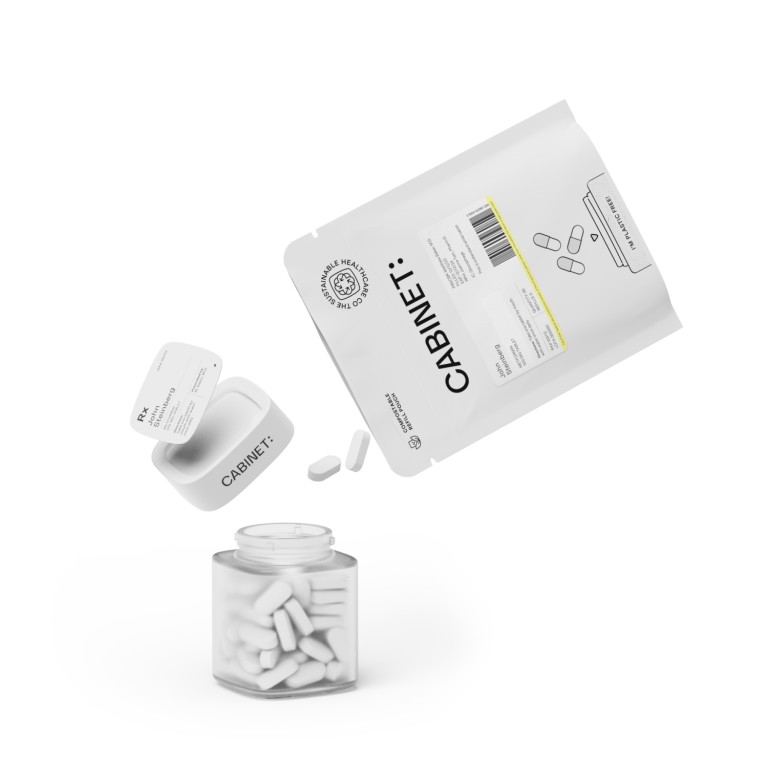If you have been prescribed Naratriptan, it is important to ensure you have a steady supply of this medication. Regularly refilling your Naratriptan prescription is crucial for maintaining consistent treatment and effectively managing your condition. In this article, we will explore the importance of timely prescription refills, discuss the steps to refill your prescription, provide tips for dealing with insurance, and offer strategies for managing your Naratriptan prescription.
Understanding Naratriptan and Its Uses
First and foremost, let’s understand what Naratriptan is. Naratriptan is a medication that belongs to a class of drugs known as triptans. Triptans are a group of medications specifically designed to target and relieve the symptoms of migraines. They work by narrowing blood vessels in the brain and reducing the release of certain chemicals that cause pain and inflammation.
When it comes to migraines, they are not just your typical headaches. Migraines are a neurological condition that can cause severe throbbing or pulsing pain, usually on one side of the head. Along with the intense pain, migraines can also bring along other unpleasant symptoms such as nausea, vomiting, and sensitivity to light and sound. These symptoms can be debilitating and significantly impact a person's daily life.
Now, let's dive deeper into the conditions Naratriptan is used to treat. As mentioned earlier, Naratriptan is primarily used for the treatment of migraines. However, its usefulness extends beyond just migraines. It can also be prescribed for the treatment of cluster headaches.
Cluster headaches, also known as "suicide headaches," are excruciatingly painful headaches that occur in cyclical patterns or clusters, often on one side of the head. These headaches are relatively rare but can be incredibly debilitating for those who experience them. The pain is often described as a sharp, burning, or piercing sensation, and it can last anywhere from 15 minutes to several hours. Cluster headaches are accompanied by symptoms such as redness and tearing of the eye, nasal congestion, and restlessness.
When it comes to treating migraines and cluster headaches, Naratriptan has shown significant efficacy. It works by binding to specific receptors in the brain, known as serotonin receptors, and inhibiting the release of certain chemicals that play a role in the development of migraines and cluster headaches. By doing so, Naratriptan helps to alleviate the pain and reduce the frequency and intensity of these debilitating headaches.
It is important to note that Naratriptan is not a preventive medication for migraines or cluster headaches. It is primarily used as an acute treatment to relieve the symptoms once they occur. For preventive measures, other medications and lifestyle changes may be recommended by healthcare professionals.
In conclusion, Naratriptan is a valuable medication that provides relief for individuals suffering from migraines and cluster headaches. Its mechanism of action and effectiveness in targeting the symptoms make it a go-to choice for many healthcare providers. However, it is essential to consult with a healthcare professional before starting any medication to ensure it is suitable for your specific condition and medical history.
The Importance of Timely Prescription Refills
Timely refill of your Naratriptan prescription is essential for several reasons. Missing a dose can have negative consequences and may prevent you from obtaining relief from your symptoms.
Risks of Missing a Dose
On the other hand, missing or delaying a dose of Naratriptan can lead to a recurrence of your migraine or cluster headache symptoms. This may be because Naratriptan works by narrowing blood vessels in the brain and reducing the release of certain substances that can trigger a headache. When you miss a dose, the medication is not able to perform its intended action, and your symptoms may persist or worsen.
Maintaining Consistent Treatment
Consistency is key when it comes to managing chronic conditions like migraines or cluster headaches. By adhering to your prescribed medication schedule and refilling your Naratriptan prescription on time, you can ensure that you are consistently receiving the necessary dosage to effectively manage your condition.
Steps to Refill Your Naratriptan Prescription
In order to refill your Naratriptan prescription, there are a few simple steps to follow. By following these steps, you can streamline the process and avoid any potential delays.
Contacting Your Healthcare Provider
The first step is to reach out to your healthcare provider. Contact them to request a refill of your Naratriptan prescription. It is important to communicate any changes in your symptoms, dosage requirements, or potential side effects to your healthcare provider during this conversation.
Working with Your Pharmacy
Once your healthcare provider approves the refill, you need to work with your pharmacy to process the prescription. It is advisable to call your pharmacy ahead of time to ensure that they have the medication in stock, especially if you use a smaller or specialized pharmacy.
Dealing with Insurance for Prescription Refills
Understanding your insurance coverage is essential for a smooth prescription refill process. Insurance can play a significant role in determining the cost, availability, and authorization of your Naratriptan prescription.
Understanding Your Coverage
Start by reviewing your insurance policy to understand the specifics of your coverage. Familiarize yourself with any copayments, deductibles, or limitations that may apply to your prescription medication.
Navigating Insurance Denials or Delays
Despite your best efforts, you may encounter insurance denials or delays when attempting to refill your Naratriptan prescription. If this happens, don't panic. Reach out to your insurance provider to understand the reason for the denial or delay and to explore potential solutions. They may require additional information or documentation from your healthcare provider to process the refill request.
Tips for Managing Your Naratriptan Prescription
Managing your Naratriptan prescription effectively can significantly improve your treatment outcome and overall experience. Here are some tips to help you stay organized:
Setting Up Prescription Reminders
Use smartphone apps or calendar alerts to remind yourself when to take your medication and when to refill your prescription. By setting up regular reminders, you can minimize the risk of forgetting a dose or running out of medication.
Organizing Your Medication Schedule
Consider using a pill organizer to keep track of your Naratriptan dosage. This can help ensure that you take the medication at the prescribed times and avoid any confusion or missed doses.
In conclusion, refilling your Naratriptan prescription on time is crucial for the effective management of migraines or cluster headaches. It is important to understand the medication, adhere to your prescribed treatment plan, and stay organized to ensure consistent treatment. By following the steps outlined in this article and staying proactive, you can ensure a smooth prescription refill process and optimize your treatment outcomes.








